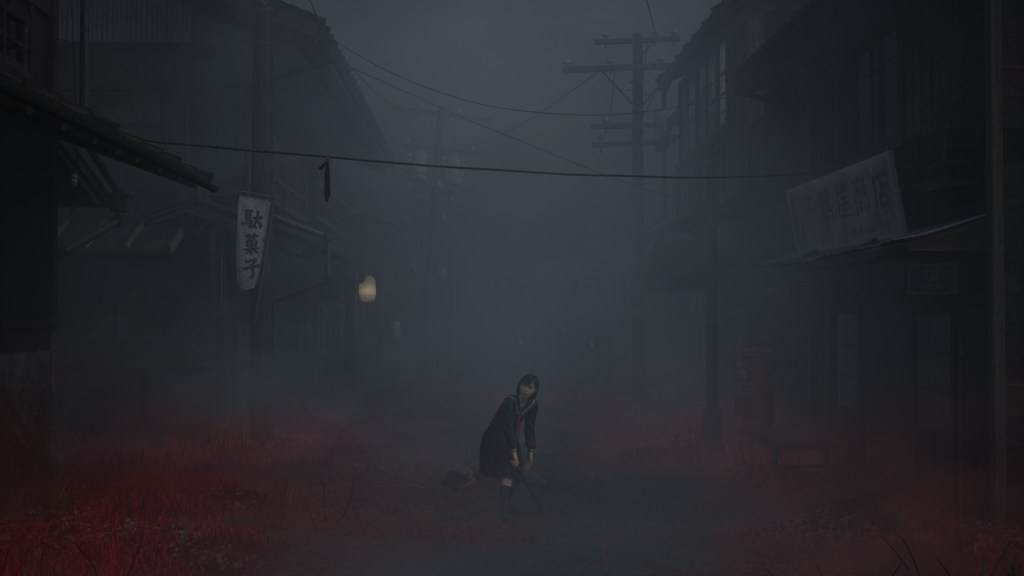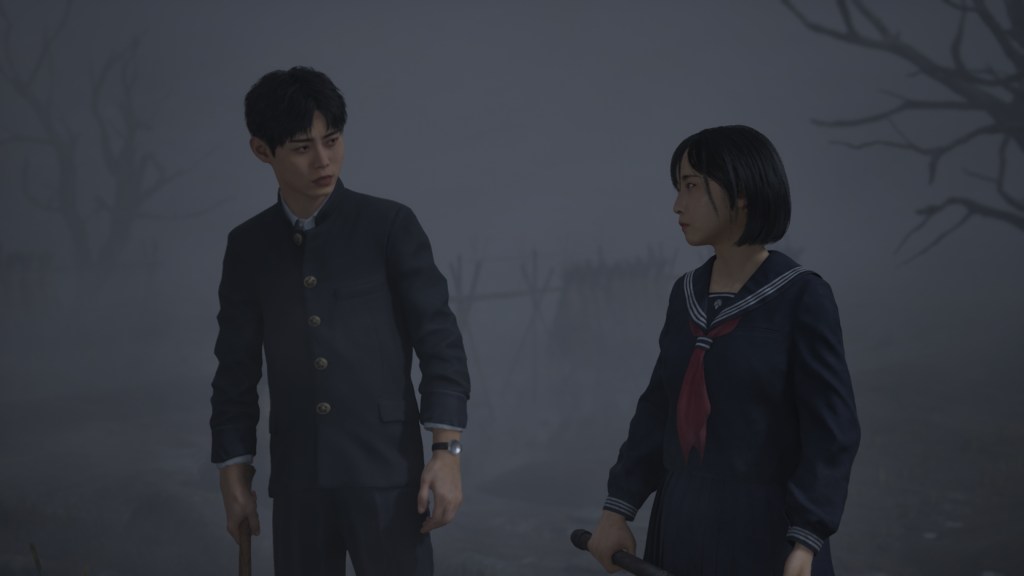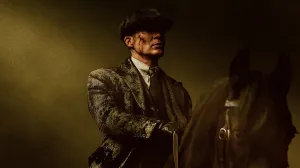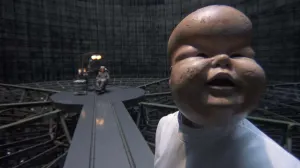Like an invasive and overbearing cloud of fog, Silent Hill 2 has loomed over just about every crevice of the franchise since 2001. Success can sometimes twist into a burden as it sets a daunting standard that might not be met again. Such weight played a role in crushing other installments, but a few of those games asked for such comparisons by so clearly trying to trace over James Sunderland’s dark debut. Silent Hill f avoids this pitfall by forging its own path forward, resulting in the best Silent Hill game in over 20 years.
Videos by ComicBook.com
Silent Hill f’s biggest divergences come from its setting and characters, the two of which are intimately intertwined. 1960s Japan is a massive shift from the American locales seen in most other entries. While the United States is vast, the cityscapes aren’t too dissimilar from one another and don’t allow for much freedom; there are only so many ways to render an American hospital. Ebisugaoka, f’s rural Japanese village, is able to more fully explore how a town can be infected in a way that goes beyond prisons and apartment complexes that have been rusted beyond belief.
Silent Hill f Explores More Than Many Other Entries

Corruption, when isolated to old wooden buildings surrounded by greenery, comes out in different ways and is beautifully showcased by its scores of crimson red shrubbery that spreads as the madness grows stronger. This type of unknowable and unsettling infection is visually stunning and made possible by its setting. It swerves from the other Silent Hill games and creates something totally unique in the process but still gets the same point across of a place turning to the dark side. Even the Otherworld is a more traditional Japanese temple and completely unlike the disgusting Otherworlds in the other games. It’s impossible to confuse a screenshot of f with any other entry, and that’s not a trick most Silent Hill games can pull off.
The brilliance of this achievement is further compounded when considering when the game takes place and who it stars. Hinako Shimizu, f’s main character, is a teenage girl and that allows f to ask different questions that are rooted in that identity and perspective. And even though there’s plenty of country-agnostic universality in what f is trying to say — gender roles and abusive men are a constant — the way in which the 1960s and Japan can refract those themes gives the game even more of its own special sauce. Silent Hill 3‘s Heather also moved the franchise in a unique direction because of who she was, and f follows that lead and then some.
By doing all of this, f is able to drift away from Silent Hill 2’s gravitational pull, which has sucked in far too many Silent Hill games. Homecoming, one of the more maligned chapters, has a terrible late-game twist that seems like it’s only trying to emulate the revelation near the end of Silent Hill 2 without doing any of the legwork; it’s just pantomiming what came before. It’s even got an unnecessary Pyramid Head cameo that, on top of being cheap nostalgia bait, diminishes his role in Silent Hill 2 since it implies he’s not something specific to James. It’s obvious he’s there to excite fans and not to serve the story.
Downpour doesn’t copy Silent Hill 2’s story beats as blatantly, but it still stars a complicated middle-aged man with a checkered past who also happens to bear a striking physical resemblance to James. Origins also tries to have a main character with a tragic backstory, but doesn’t integrate that thread into the main plot well and, again, comes off as a title that is acting in accordance to a blueprint and not off ingenuity. Not all of these protagonists are the exact same, but they pull from similar tapestry and thus aren’t dramatic turns from one another.
Silent Hill f Is Still a Silent Hill Game

Silent Hill 3, Silent Hill 4: The Room, Silent Hill: Shattered Memories, and P.T. are some of the more well-received games and part of that stems from how they all try to break away from Silent Hill 2 in some way. SH3 starred a high school girl who also wasn’t a damaged person. SH4 centered around a spooky room and doesn’t even take place in Silent Hill. Shattered Memories psychoanalyzed players and had no combat. And P.T. shifted to a first-person perspective, focused on secrets, and was, frankly, a hell of a lot scarier than its predecessors.
They all still have some overlapping qualities with the coveted 2001 classic, be it a mop-headed protagonist or more expected take on the foggy town, but they’re still tonally Silent Hill games. f, through its setting, goes even further outside of the realm of Silent Hill than those games but still nails the essence of the series. f’s narrative is deeply metaphorical, requires some digging, and isn’t afraid to explore darker or taboo topics. Its ghoulish monster designs often act as clever symbolism. The score oscillates between haunting and dreamlike and is accompanied by audio design that sounds like the world itself is wrenching in pain.
Silent Hill, when boiled down, prioritizes allegorical narrative design, complex protagonists, shifting between realms, and unusual soundtracks. A Silent Hill game doesn’t need to hit every mark on a superficial checklist in order to be part of the series. It doesn’t need to take place in a typical Americanized Silent Hill or star some depressed guy. Honing in on the soul of a series is something modern DOOM game director Hugo Martin has spoken about in the past. He used the Star Wars sequel trilogy as an example, noting there is value in analyzing the core text when revitalizing a franchise and failing to do so, which he claims happened in said Star Wars sequel trilogy, can bode poorly. The quality of the last three DOOM games — which has a lot to do with how wonderfully they adapt the first two DOOM titles — speaks to the value of this viewpoint.
Silent Hill f Is a Blueprint for Other Franchises to Follow

Series producer Motoi Okamoto seems to agree with Martin, as Okamoto emphasized the teams will “keep experimenting and be ambitious” in order to give each entry “its own distinct flavor.” He later explained how Silent Hill will continue to be “always challenging in a positive way” and that a “psychological story is essential to the essence of Silent Hill,” both of which will be a focus going forward. And similar to how DOOM benefited from Martin’s design ethos, f is proof that Okamoto’s words have merit.
And because of these successes, Silent Hill f should serve as the model going forward for the series. A narrow view of the franchise is how games like Homecoming, Downpour, and Origins happen, and Silent Hill doesn’t need more bad or mediocre entries that are desperately trying to cling to the coattails of an all-timer. Silent Hill has been lost in the fog for too long and, as f has showcased, creativity and boldness is how the series can find the light once again.
A PS5 copy of Silent Hill f was provided by the publisher for the purpose of this feature.
What do you think? Leave a comment below and join the conversation now in the ComicBook Forum!









